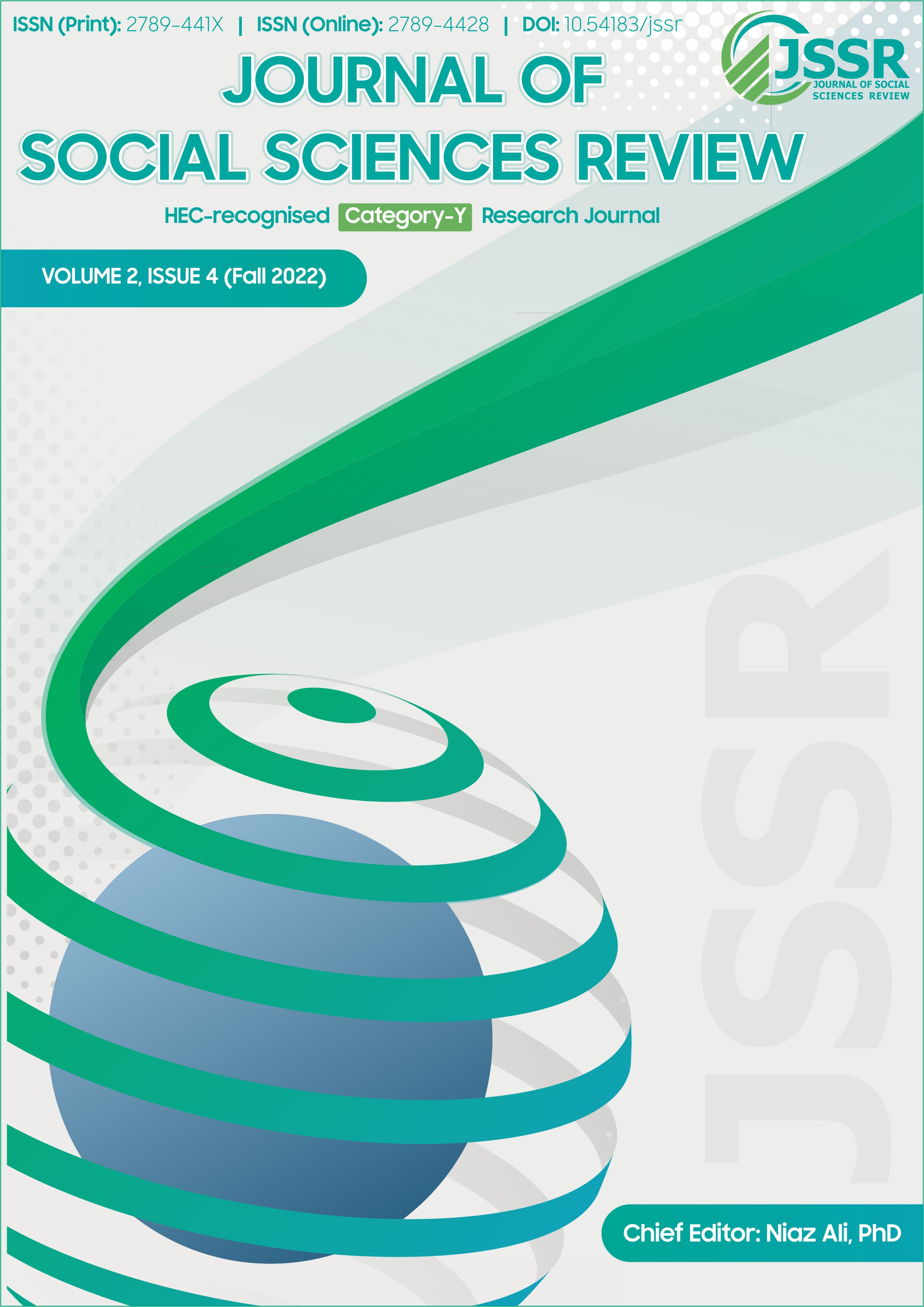Legal Framework for Prosecution of Sexual Violence Cases in Bosnia
DOI:
https://doi.org/10.54183/jssr.v2i4.67Keywords:
Cases in Bosnia, Sexual Violence, Legal Framework, Prosecution of Sexual Violence,Abstract
International tribunals have been very important in bringing criminals to justice involved in sexual violence. The tribunal has demonstrated that it is possible to effectively prosecute wartime sexual violence and has provided a forum for unfortunate victims to discuss their suffering. The tribunal is anticipated to be capable of prosecuting and exploring a variety of international and domestic sexual abuse. The legal framework and various laws that have been implemented to it have improved the regulatory and legal structure for the prosecution of national war crimes, which has led to a decrease in the various crimes of sexual violence on a worldwide scale. The article that follows is based on qualitative methods of research. An analysis of qualitative research methodology is presented in the following article.
References
Alison, M. (2007). Wartime sexual violence: women’s human rights and questions of masculinity. Review of International Studies, 33(1), 75-90. https://doi.org/10.1017/s0260210507007310
Altunjan, T. (2021). The International Criminal Court and Sexual Violence: Between Aspirations and Reality. German Law Journal, 22(5), 878-893. https://doi.org/10.1017/glj.2021.45
Clark, H. (2010). "What is the justice system willing to offer?" Understanding sexual assault victim/survivors' criminal justice needs. Family Matters, (85), 28-37. https://search.informit.com.au/fullText;dn=242732698194592;res=IELHSS
Daly, K. (2017). Sexual violence and victims’ justice interests. In Restorative responses to sexual violence (pp. 108-139). Routledge.
Des Rosiers at al,. (1998). Legal compensation for sexual violence: Therapeutic consequences and consequences for the judicial system. Psychology, public policy, and law, 4(1-2), 433-451. https://doi.org/10.1037/1076-8971.4.1-2.433
Flynn, A. (2015). Sexual Violence and Innovative Responses to Justice. Rape Justice, 92–111. https://doi.org/10.1057/9781137476159_6
Fortune, M. M. (1983). Sexual violence: The unmentionable sin (p. 2). New York: Pilgrim Press. https://www.ojp.gov/ncjrs/virtual-library/abstracts/sexual-violence-unmentionable-sin
Frazier, P. A., & Haney, B. (1996). Sexual assault cases in the legal system: Police, prosecutor, and victim perspectives. Law and human behavior, 20(6), 607-628. https://doi.org/10.1007/bf01499234
Gaggioli, G. (2014). Sexual violence in armed conflicts: A violation of international humanitarian law and human rights law. International Review of the Red Cross, 96(894), 503-538. https://doi.org/10.1017/s1816383115000211
Grey, R. (2014). Sexual violence against child soldiers: The limits and potential of international criminal law. International Feminist Journal of Politics, 16(4), 601-621. https://doi.org/10.1080/14616742.2014.955964
Haan, V. (2005). The development of the concept of joint criminal enterprise at the international criminal tribunal for the former Yugoslavia. International Criminal Law Review, 5(2), 167-202. https://doi.org/10.1163/1571812054127817
MacKinnon, C. A. (2007). The ICTR's Legacy on Sexual Violence. New Eng. J. Int'l & Comp. L., 14, 211.
Miller, A. M. (2004). Sexuality, Violence against Women, and Human Rights: Women Make Demands and Ladies Get Protection. Health and Human Rights, 7(2), 16. https://doi.org/10.2307/4065347
Murphy, S. D. (1999). Progress and jurisprudence of the International Criminal Tribunal for the former Yugoslavia. American journal of international law, 93(1), 57-97. https://doi.org/10.2307/2997956
SáCouto, S., & Cleary, K. (2009). The importance of effective investigation of sexual violence and gender-based crimes at the International Criminal Court. Am. UJ Gender Soc. Pol'y & L., 17, 337.
Salter, M. (2013). Justice and revenge in online counter-publics: Emerging responses to sexual violence in the age of social media. Crime, Media, Culture, 9(3), 225-242. https://doi.org/10.1177/1741659013493918
Scully, D. (2013). Understanding sexual violence: A study of convicted rapists. Routledge. https://www.taylorfrancis.com/books/mono/10.4324/9780203947975/understanding-sexual-violence-diana-scully
Sellers, P. V. (2008). The prosecution of sexual violence in conflict: The importance of human rights as means of interpretation (p. 17). Women's Human Rights and Gender Unit (WRGU).
Shenk, M. D., Rhoads, C. A., & Howe, A. L. (1999). International Criminal Tribunal for the Former Yugoslavia and for Rwanda. The International Lawyer, 33(2), 549–554. http://www.jstor.org/stable/40707956
Sumalla, J. M. T., & Hernández-Hidalgo, P. (2018). Victims of child sexual abuse: Understanding their need for justice. International journal of law, crime and justice, 54, 11-20. https://doi.org/10.1016/j.ijlcj.2018.06.003
Tavara, L. (2006). Sexual violence. Best Practice & Research Clinical Obstetrics & Gynaecology, 20(3), 395-408. https://www.sciencedirect.com/science/article/abs/pii/S1521693406000265
Wood, E. J. (2006). Variation in sexual violence during war. Politics & Society, 34(3), 307-342. https://doi.org/10.1177/0032329206290426
Downloads
Published
Issue
Section
License
Copyright (c) 2023 Copyright in the Journal of Social Sciences Review is retained by the author(s). Authors also grant any third party the right to use the article freely as long as its integrity is maintained and its original authors, citation details and publisher are identified.

This work is licensed under a Creative Commons Attribution-NonCommercial 4.0 International License.
SSR's Editorial Board shares the vision of providing free access to information, education, and science for everyone, thus promoting its content through an OPEN ACCESS POLICY, fulfilling the DOAJ definition of open access. The JSSR adheres to an Open Access and Copyright Licensing Policy based on the belief that making research freely accessible to the public promotes greater global knowledge sharing.
The JSSR uses the Creative Commons Attribution-NonCommercial 4.0 International License. The authors who apply and publish in JSSR consent to abide by the copyright policy set out in the Creative Commons 4.0 license (Attribution-NonCommercial 4.0 International license).
- Copyright in the Journal of Social Sciences Review is retained by the author(s).
- Authors also grant any third party the right to use the article freely as long as its integrity is maintained and its original authors, citation details and publisher are identified.
While "By 'open access' to this literature, we mean its free availability on the public internet, permitting any users to read, download, copy, distribute, print, search, or link to the full texts of these articles, crawl them for indexing, pass them as data to software, or use them for any other lawful purpose, without financial, legal, or technical barriers other than those inseparable from gaining access to the internet itself."



